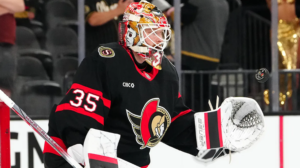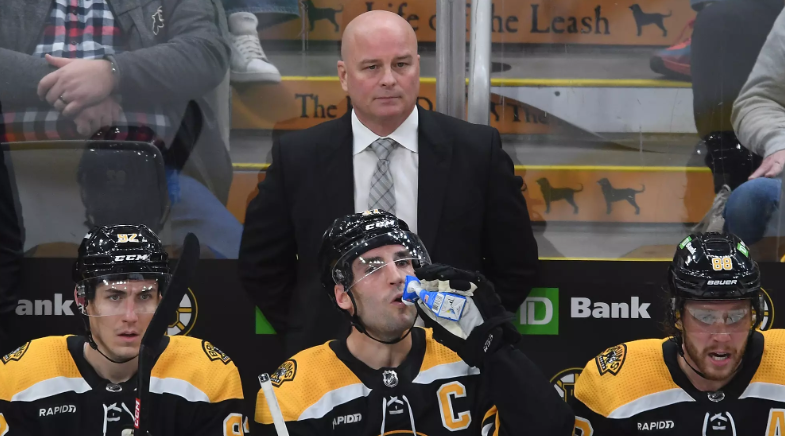Just In: Unpacking the Blame as What Went Wrong for the Bruins This Season?
Who’s most to blame for Bruins’ disastrous start to season?
There’s plenty of blame to go around with the Bruins at the bottom of the Atlantic Division standings

The Boston Bruins are currently facing a tumultuous start to the 2024-25 NHL season, and the frustration surrounding the team is palpable. After a series of disheartening performances, including a staggering 8-2 defeat to the Carolina Hurricanes, it’s clear that the problems afflicting this storied franchise run deep. The lack of 5-on-5 scoring, excessive penalties, and an overall absence of energy and discipline are evident, leaving fans and analysts alike to question where the blame lies.
At the core of this disastrous beginning is a myriad of issues that seem to compound with each game. The Bruins have found themselves struggling to generate offense at even strength, a fundamental aspect of successful hockey. In the high-paced environment of the NHL, failing to create scoring opportunities during 5-on-5 play can severely hinder a team’s chances of success. The Bruins’ inability to establish a rhythm or capitalize on their chances has become a defining characteristic of their play thus far.
Compounding this offensive drought is the team’s persistent problem with penalties. In a league that increasingly punishes undisciplined play, the Bruins have seen themselves spending too much time in the penalty box. This not only disrupts the flow of their game but also places additional pressure on their penalty kill, which has struggled to perform at an acceptable level. The statistics tell a grim story: the Bruins’ power play is underwhelming at 1-for-5 in the recent loss, while their penalty kill has faltered significantly, giving up crucial goals in critical moments.
Defensively, the Bruins appear disorganized, often caught flat-footed and unable to adapt to the speed of the game. The defensive breakdowns during the 8-2 blowout were glaring, with players frequently failing to pick up their assignments or maintain their positioning. The discipline that once characterized the Bruins’ defensive strategy seems to have evaporated, replaced by a chaotic style of play that invites opposing teams to exploit their weaknesses.
Moreover, the lack of energy and enthusiasm on the ice is particularly troubling for a franchise known for its grit and determination. Fans have come to expect a level of effort that embodies the team’s identity, but what they have witnessed this season has been far from that. The Bruins have often appeared flat and uninspired, failing to match the intensity of their opponents. This stark contrast raises questions about the players’ commitment and focus, crucial elements that are often the difference between victory and defeat in the NHL.
Leadership is another critical factor contributing to the Bruins’ struggles. Traditionally, the team has relied on veteran players to set the tone and guide the younger members. However, with several key figures from past successes either retired or performing below expectations, the leadership void has been glaring. The absence of a strong, unifying presence in the locker room can lead to a lack of accountability, as younger players may not feel the same pressure to step up when the going gets tough.
Coaching decisions have also come under scrutiny. Head Coach Jim Montgomery is in a pivotal position, as the direction he takes with line combinations, ice time, and game strategy can significantly impact the team’s performance. As the season progresses, it will be essential for him to identify the right combinations that foster chemistry and maximize the strengths of his players. Yet, some fans have expressed dissatisfaction with the adjustments—or lack thereof—made in-game. The ability to adapt to the ebb and flow of the match can be the difference-maker, and Montgomery’s tactical decisions are being closely analyzed in light of the team’s poor start.
Injuries cannot be overlooked when discussing the factors at play. The NHL is a grueling league, and injuries are an unfortunate reality that every team faces. The Bruins have had their share of health issues, which can disrupt team chemistry and lead to a rotating cast of players in key positions. When the lineup is constantly changing, it becomes challenging to build cohesion and maintain consistency, essential components for any successful hockey team.
Furthermore, the youth movement within the Bruins’ ranks has been both a blessing and a curse. While developing younger talent is crucial for the future, relying heavily on inexperienced players in critical situations can be risky. These young players are still learning the nuances of the game and the mental fortitude required to thrive at the NHL level. Mistakes are inevitable, but the challenge lies in managing those errors while still demanding a high level of performance.
As the Bruins find themselves at the bottom of the Atlantic Division standings, the path forward is uncertain. There is no single culprit to blame for the team’s struggles; rather, it is a confluence of issues that have coalesced into this dismal start. From coaching strategies and player execution to leadership dynamics and injury management, the organization must address these various aspects to turn the season around.
Looking ahead, it’s essential for the Bruins to reevaluate their approach to the game. Identifying and solidifying their core strengths—whether it be tightening up their defensive play, finding a rhythm in their offense, or regaining their trademark grit—will be critical. This requires a concerted effort from both the players and coaching staff. Every practice and game will be an opportunity to rebuild confidence and restore the identity that has defined the franchise for years.
Additionally, engaging with fans and fostering a sense of unity will be essential as the team navigates through this challenging period. The support from the fanbase can be a powerful motivator, pushing players to elevate their game even when the chips are down. Acknowledging the frustration while also fostering hope for improvement can help bridge the gap between the team and its supporters.
Ultimately, the question of who is most to blame for the Bruins’ disastrous start may not yield a simple answer. Instead, it serves as a reminder that success in the NHL is built on a multitude of factors, and failure can be just as multifaceted. As the Bruins continue to seek answers and strive for improvement, it will be vital for everyone involved—players, coaches, and management—to commit to a collective effort to overcome these early-season challenges. Only through unity, resilience, and a renewed focus can the Bruins hope to reclaim their place as a formidable force in the league. The journey ahead may be daunting, but the potential for growth and redemption is always present.
